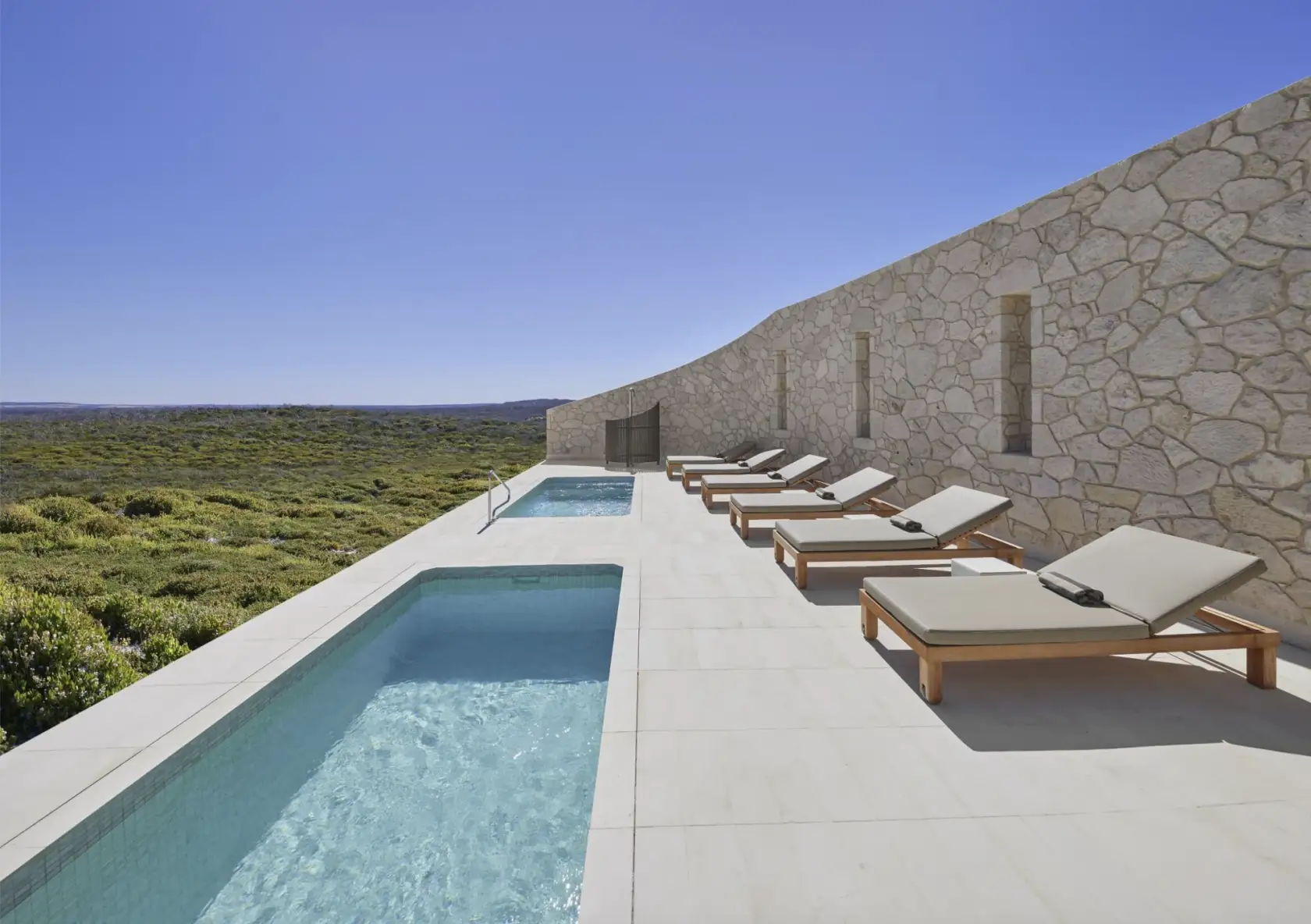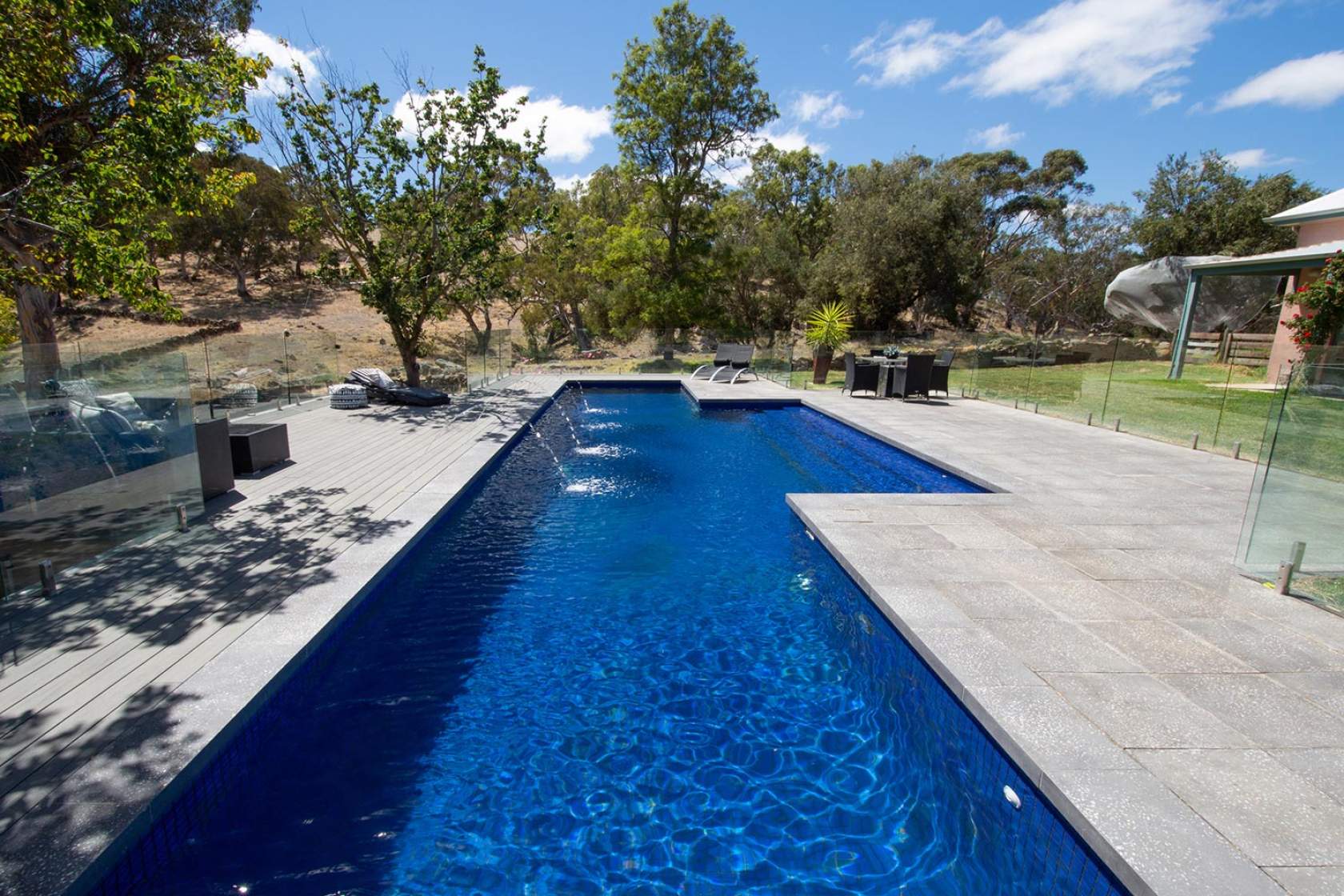

Beat the heat
We all know water is a precious commodity in Australia, particularly during periods of prolonged drought. For pool and spa owners concerned about water usage, a few simple design and maintenance changes can help minimise the environmental impact.
Nothing quite rivals the feeling of diving in to cool, clean water on a scorching summer’s day... it’s one of the joys of pool ownership. But when it comes to the harsh Australian summer, every drop of water counts, so we’ve put together some tips on minimising waste while still enjoying the benefits your pool offers
Cover up
Uncovered, the average-sized backyard swimming pool will lose around 7mm of water per day during the summer months. That may not sound like much, but it equates to around seven litres per square metre. Depending on location, that means an 8 x 4 m pool loses around 225 litres of water every day. That adds up to a lot of lost water. Fortunately, one of the simplest fixes is utilising a pool cover, which can reduce evaporation by about 95%.
Pool covers also provide a host of additional benefits:
Your pool will remain cleaner for longer because leaf litter is minimised.
You’ll save on chemicals because evaporation has decreased.
Pool covers also work well in cooler months, effectively trapping in heat, meaning you’ll save energy and reduce heating costs.
Utilising a cover extends the swimming season, giving you more time to enjoy your investment.
A pool cover that is climate care certified has undergone independent third-party testing and verification, so you can trust claims being made by the vendor.
Waste not, want not
Making use of available rainwater is one of the simplest ways to reduce your pool’s environmental impact. Investing in an efficient way to maintain water levels in all weather conditions year-round will also quickly pay off.
Options for harvesting rain may include downpipe diverters that deliver rainwater directly from the rooftop to the pool, through to more permanent storage options. A fixed rainwater tank allows you to store top-up water until needed or to use it for the laundry and toilet, increasing household water efficiency and saving money on water bills.
Above-ground rainwater tanks constructed from corrugated iron, steel or lightweight polyethylene are available in a range of sizes, colours and shapes, including slimline options for smaller urban spaces.
Recycle and re-use
Backwashing is the process of cleaning the swimming pool filter, but it can use extra water if you aren’t careful. You can reduce the requirement for backwashing by ensuring the pool and filters are clean and you should also only backwash until the water in the sight-glass runs clean. Overly frequent backwashing can even reduce the effectiveness of filters.
Filter backwash or de-chlorinated pool wastewater can be collected and re-used on lawns and gardens.
Filter options
Cartridge filters are a popular alternative to traditional filter media alternatives like sand, glass and zeolite. They can screen out more dirt and debris thanks to a design that provides a larger filtration area. Many also incorporate antimicrobial material to prevent bacterial growth. They simplify maintenance because they reduce or eliminate the need for frequent backwashing.
Carry out regular maintenance
It is important to clean the filter cartridge element regularly. Additionally, you should soak and degrease the element twice a year to improve longevity and to condition the cartridge. Delays in cleaning will increase the likelihood of the filter becoming clogged, which in turn leaves the pool vulnerable to poor water circulation and filtration issues. Clogged, unchanged filters can also cause other equipment to work harder than necessary, drawing more power than ordinarily required.
Banish leaks
Leaks not only waste water, but could undermine the foundations of your pool. If the water level drops abruptly or you have other reasons to suspect a leak, you should act quickly.
Observance is the best way to identify and stop a leak. Turn off the automatic top-up system and use tape or a marker to record the current water line so you can easily see changes. Compare usage volumes on your current water bill with past bills for clearer insights.
There are two types of pool leaks:
Static leaks, which lose the same amount of water consistently over a given time period.
Pressure leaks, which cause water loss only when the filter system is running.
Before you call an expert, it’s worthwhile doing a quick DIY check including the following:
Pool wet areas — walk around the pool edge and inspect the area between the pool and the equipment pad. Take note of wet soil and eroded areas.
Plumbing, including valves, pipes and joints — visually inspect the plumbing and be on the lookout for water leaks. even one drop per second equates to 7000 litres per year, so a steady dribble could take you into astronomical numbers very quickly.
Determine what type of leak it is — ascertain whether you are dealing with a static or pressure leak, noting if running the filter system has any impact on the water loss.
Check the pool surface — look for cracks in the pool lining or tears in the vinyl pool sheet. inspect the tile-line and inside the skimmer box. It may still prove to be a plumbing leak, but it’s worthwhile inspecting these elements as well.
Check the lighting — underwater lights can and do leak, especially the conduit that runs from the light niche to the junction box. Filling the opening of the conduit in the back of the light niche with putty, silicone or caulk can often fix the problem.
Strategic Poolside Planting
Decreasing wind speed across the pool surface can dramatically reduce evaporative water loss. Fencing, screening or planting a line of trees are all effective ways to create a windbreak, but you don’t want to shade the pool completely. If using trees or shrubs to create a green barrier, be sure to opt for non-deciduous or evergreen alternatives and keep them neatly trimmed, limiting the likelihood of plant debris ending up in the pool.
Location and Prevalent conditions
When planning your swimming pool installation, think about the location. Water that receives direct sunlight will be warmer to swim in and need less help from a heating system, but you also need to factor in evaporation.
Water loss through evaporation is unavoidable, with temperature (both water and ambient), humidity and wind speed all playing a part. You can lessen the impact through a combination of design, strategic landscaping and planting, and the use of a pool cover.
Get your Pool and/or Spa climate care certified
Homeowners have plenty of options when considering a swimming pool or spa and the vast array of associated equipment to operate and maintain their investment. The climate care certified program supports and empowers pool owners — allowing you to reduce both water and energy consumption by opting for environmentally sustainable products that deliver economic benefit as well.
Benefits of certification:
Purchase with confidence knowing that you are choosing a certified environmentally sustainable solution.
Ability to differentiate between efficient and sustainable pools, spas and equipment.
Comfort that pools, spas and associated equipment are responsibly made.
Ensures claims being made have been verified by the peak industry body.
Recognition of your commitment to owning an environmentally sustainable swimming pool or spa.
Reduce your carbon footprint whilst saving money.
